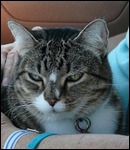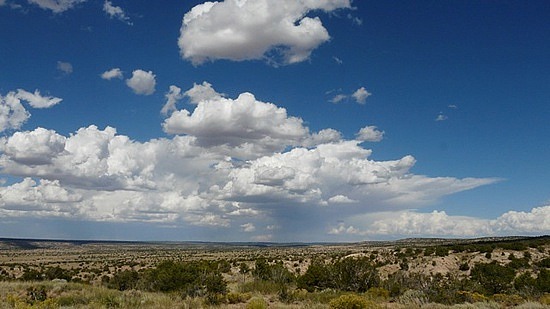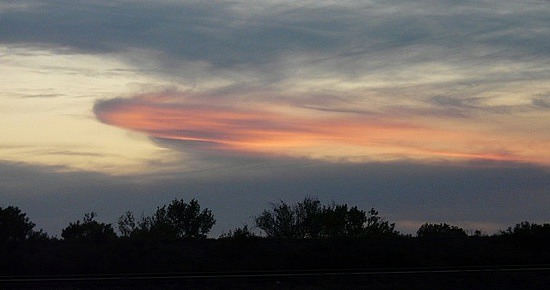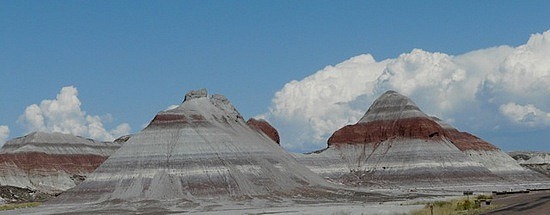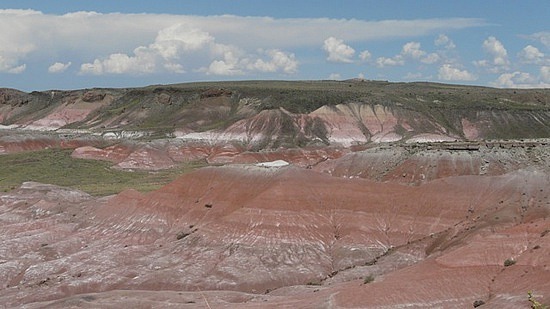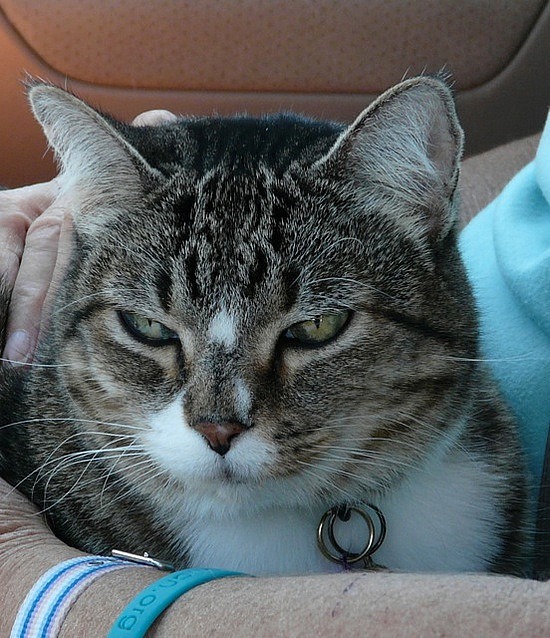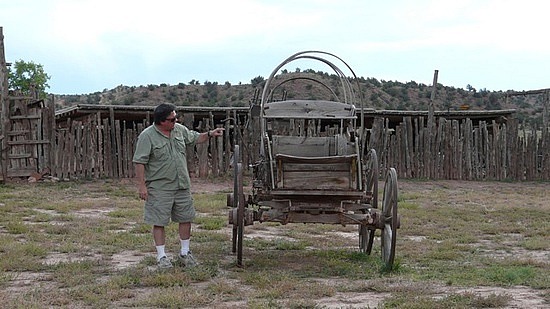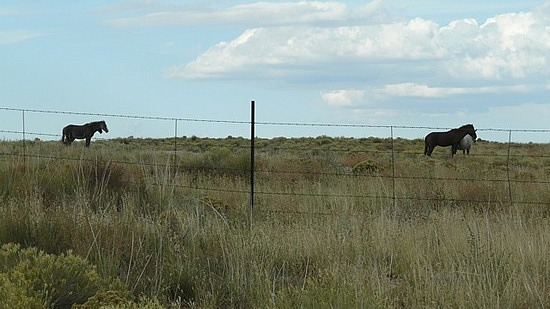Friday, October 1 - Tuba City to Holbrook
This morning we visited a museum dedicated to the Navajo Code Talkers of World War II. It is a fascinating part of history. As we were leaving Tuba City, people were lining the main street in anticipation of a homecoming parade. Just at the edge of Tuba City we entered Hopi lands. There have been long territory disputes between the Navajo and the Hopi but they seem to coexist with the Navajo surrounding the Hopi lands. Unlike the Navajo, whose homes are spread over their territory, the Hopi mostly live in three villages: Third Mesa, Second Mesa, and First Mesa. They are very private and to enter more than the outskirts of one of the villages you must get their permission. No photographs or recordings are allowed. Many of the Hopi are very traditional in their beliefs and practices. A lot of the very old buildings are preserved, many of them as part of newer residences. Along the roads in Navajo territory there are many stands with people selling jewelry and other handmade wares. There is little commercialism in the Hopi territory. We did stop at an excellent museum. Aside from the three mesas, we saw very few homes. There are expanses of open land and a few cornfields here and there. Corn is a very important staple in the Hopi diet and in their traditions.
At Keams Canyon we turned south and again entered the Navajo Nation. Here we saw many horses running free in the fields, along with some sheep and cattle. All along the drive today we were surrounded at a distance, and sometimes close up, by mesas, buttes, and mountains. The flatlands close to the road are desert sagebrush and some rabbitbrush. Elevations since we left Lake Tahoe have rarely dropped below 5200 feet.
Our stop for the night is Holbrook. We are staying at the Wigwam Motel, an old Route 66 landmark. The wigwams are made of concrete and very fun. Old cars sit around the property.
Saturday, October 2 - Holbrook to Chinle
We began our tour today at the Petrified Forest. I was there as a child and was interested in seeing it again. The petrified logs and rocks are often found in beautiful colors, caused by the various minerals that seeped into them over time. The process started over 200 years ago in the Chinle Formation, and over time the trees toppled and fell into riverbeds. They were washed downstream and settled, becoming buried by layers of silt, mud, volcanic ash, and sand; these layers protected them from decay. The aforementioned minerals saturated the absorbent dead wood. Silica crystals (quartz) grew in the wood, and eventually the entire log became petrified. In the mid to late 1800s, collectors gathered up much of the petrified wood from the area and used it for tables, lamps, and other souvenirs. In 1906 President Teddy Roosevelt set aside some of the land as a monument; more was added in 1932. In 1962 Congress designated the area a national park and 50,000 acres are now protected. Collecting of petrified wood from within the park is illegal and cars are all stopped on the way out of the park. Petrified wood is available for sale within the park but it is from outside park boundaries.
The Petrified Forest and the Painted Desert are linked together geographically. As you drive into the park from the south, it's mostly the remains of the Petrified Forest. At the northern end you begin to see more colors of the Painted Desert, particularly in the park's rock formations. The Painted Desert isn't as colorful as I remembered from childhood nor after the brilliant colors we have seen in our travels thus far but it is still very pretty.
After leaving the Painted Desert, we drove a while on Interstate 40 (and the old Route 66), then drove north again into the Navajo reservation on Highway 191. Again the land is open and sparsely populated. Horses and sheep graze freely. The Navajo Reservation is some 16-17 million acres with a population of around 300,000. About half of the Navajos live off the reservation for employment opportunities but retain homes on the reservation. Most of the reservation is in Arizona but it also spreads into New Mexico and Utah.
We stopped at the Hubbell Trading Post. An early trading post in this location was purchased by Lorenzo Hubbell about ten years after the Navajos were allowed to return to their land following the Long Walk to Fort Sumner, New Mexico and their internment there. Hubbell saw that trading in the area would be important as the Navajos resettled their lands. He became a trusted businessman and friend. After his death in 1930, the family continued running the trading post until the mid 1960s when it was sold to the National Park Service. It is now a national historic site and still sells staples, Indian jewelry and curios and blankets. (Yes, we bought a few trinkets).
Our stop for the night was Chinle, home of Canyon de Chelly and subject of tomorrow's blog installment.









